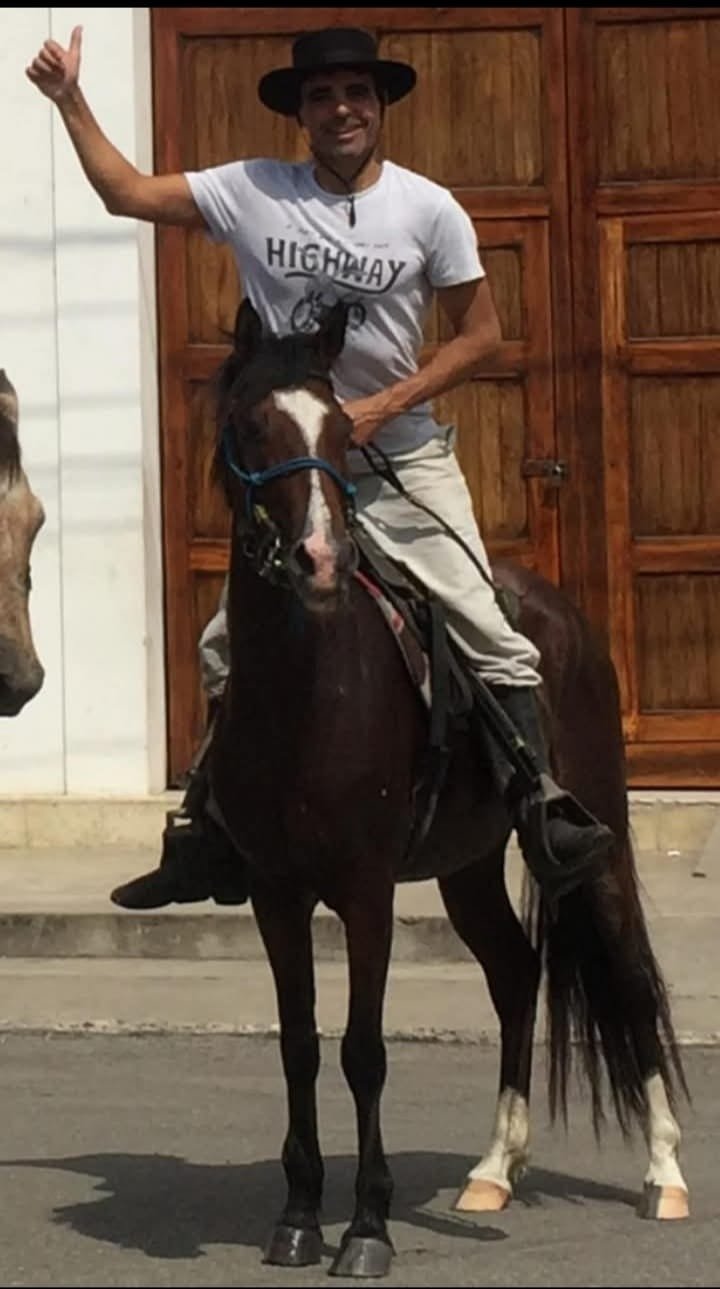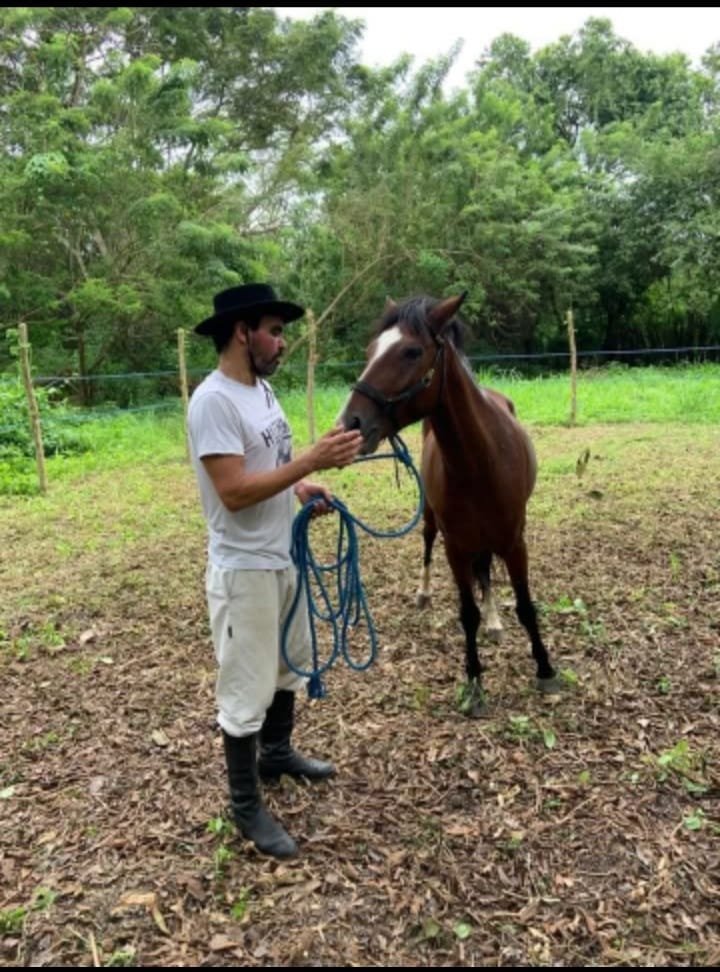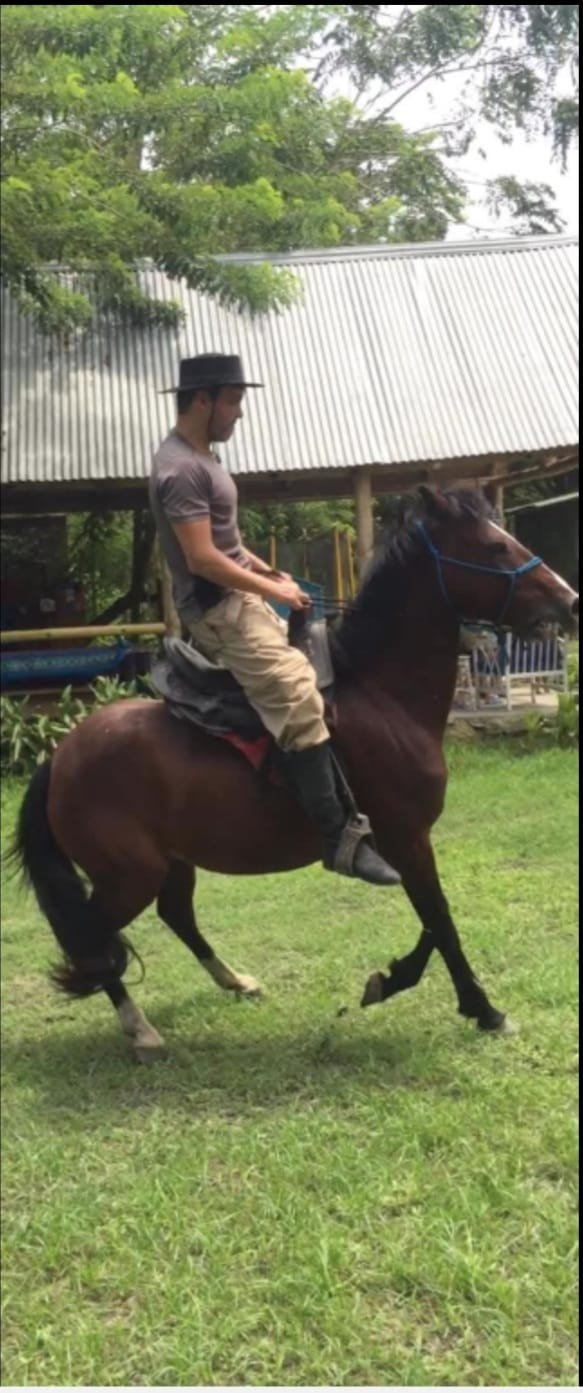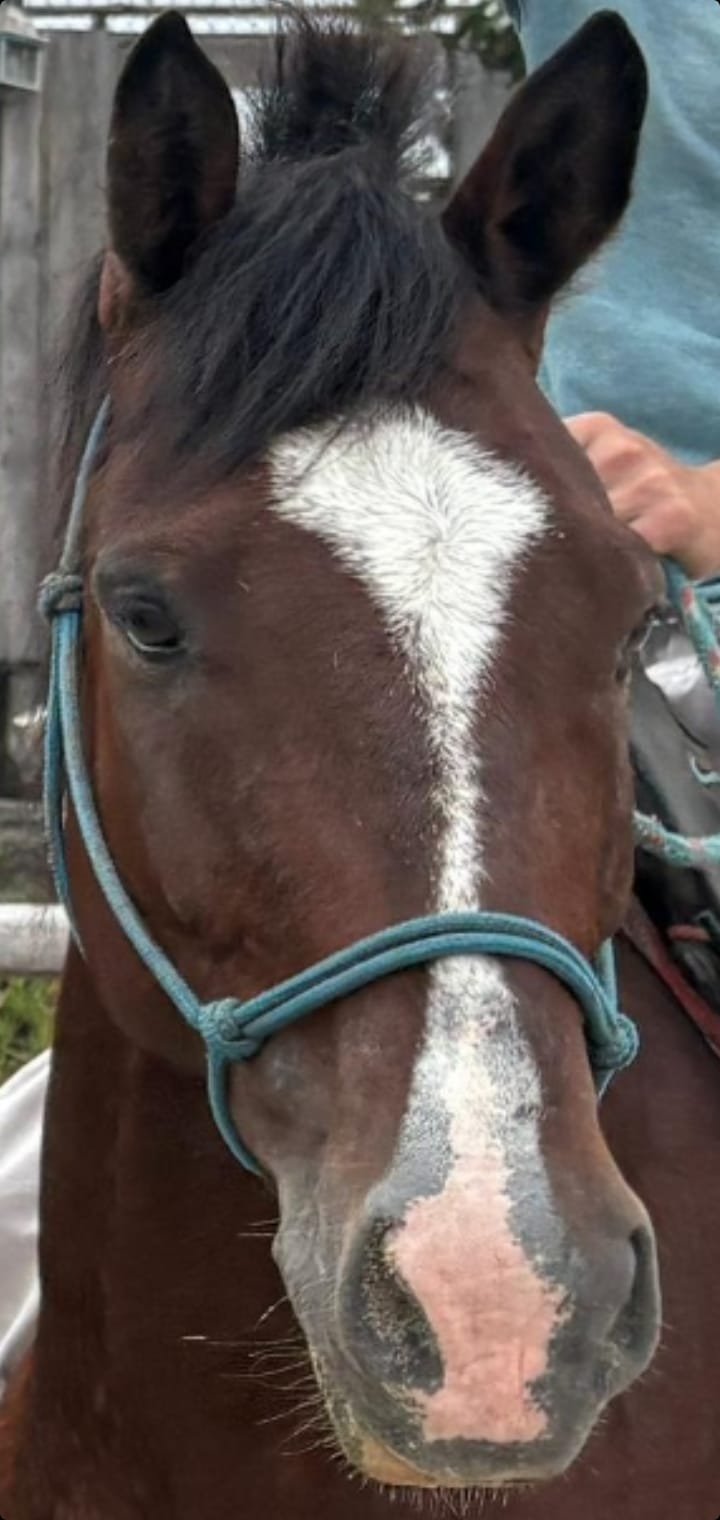La doma racional: un cambio de paradigma en nuestra relación con los caballos (Esp/Eng)
Hola Hive, espero que todos estén muy bien.
Hoy quiero contarles de qué trata la doma racional. Quienes han leído mis pocas publicaciones en esta plataforma pueden tener una idea de cómo me fui formando en este mundo con los caballos.

Mi formación de base es en doma tradicional. Sin embargo, con el tiempo y siendo autodidacta, me incliné hacia la doma racional; se puede decir que evolucioné hacia ella. Haber tenido la formación tradicional también me brinda ventajas, por decirlo de algún modo.
Bueno, para entender qué es la doma racional debemos comprender que los caballos tienen un instinto de presa y una forma de pensar diferente a la nuestra. Por ejemplo, ellos ven algo distinto en su entorno y lo consideran peligroso, por eso reaccionan ante ese peligro potencial. Nosotros, en cambio, podemos ver algo y analizar si realmente es peligroso o no. Esa es una gran diferencia que tenemos con respecto a ellos.

Es por esta razón que debemos comenzar entablando un vínculo con ellos, donde primero nos acepten como parte de su entorno, como algo natural que no represente ningún peligro. Algo así como ser parte de su manada. Los caballos, al igual que muchas especies, viven en manadas y tienen códigos específicos entre ellos. Por esto también digo que, para mí, ellos deben estar en su conjunto y no encerrados en boxes. Sí, se adaptan a esto y llegan a verlo como algo natural, pero en realidad no lo es. Es por esta razón, y por muchas otras también, que muchas veces vemos caballos estresados que reaccionan con diferentes acciones que, si no sabemos del tema, interpretamos como mañas o problemas de manejo, etc.
Por eso debemos saber interpretar todas estas conductas y ver cómo podemos guiarlos para ayudarlos. De esta manera, creando una confianza mutua, podemos lograr encontrar respuestas en ellos, no solo reacciones. Igualmente, estas reacciones pueden ocurrir, y aquí es donde entra en juego la capacidad del guía (domador). Seguramente muchos me dirán que conocen personas que doman de forma tradicional y sacan muy buenos caballos. Eso no está en discusión para mí. De hecho, la mayoría de los sistemas de doma son tradicionales y funcionan, más allá de que es un método donde lo que hacemos es doblegar al caballo.

Lo que yo quiero mostrar, y a mi modesto entender, es un cambio de paradigma, lejos de cuestionar los métodos antiguos –que respondían a un contexto determinado por la época– y, desde ahí, evolucionar. Así podemos convertirlo en un método más racional y lograr mejores avances y, tal vez, más rápido desde un punto de vista más comprensivo. También quiero aclarar algo: el caballo no es una mascota. Es por esto que el buen camino debe estar delimitado entre el amor hacia ellos y el no olvidar marcar los límites en el proceso. Esto no quiere decir que debamos utilizar métodos violentos para marcar esos límites.
El guía debe ser capaz de ver todas estas cosas, y en esta tarea eso se aprende con la experiencia del día a día y la convivencia con los caballos.

Acá les muestro algunas fotos con Otoño en la finca de @meno. En las próximas publicaciones les hablaré más específicamente del método racional y utilizaré las vivencias con Otoño para irles contando cosas más puntuales sobre esto.
Saludos, David
English Translation
Hello Hive, I hope you are all doing very well.
Today I want to tell you what rational taming is about. Those who have read my few posts on this platform may already have an idea of how I started learning in this world with horses.
My base training is in traditional taming. However, over time and being self-taught, I leaned towards rational taming; you could say I evolved towards it. Having had traditional training also gives me advantages, in a way.
Well, to understand what rational taming is, we must understand that horses have prey instincts and a way of thinking different from ours. For example, they see something different in their environment and consider it dangerous, and that is why they react to it as a potential threat. We, on the other hand, can see something and analyze whether it is truly dangerous or not. That is a big difference between us and them.
For this reason, we must begin by creating a bond with them, where they first accept us as part of their environment, as something natural that poses no threat. It’s like becoming part of their herd. Horses, like many species, live in herds and have specific codes among them. This is why I also say that, for me, they should be with their group and not locked in boxes. Yes, they adapt to it and come to see it as natural, but in reality, it is not. For this reason, and many others, we often see stressed horses who react in different ways that, if we don’t understand the subject, we interpret as bad habits or management problems, etc.
That’s why we must know how to interpret all these behaviors and see how we can guide them to help them. In this way, by creating mutual trust, we can find answers in them, not just reactions. Of course, these reactions can still occur, and that is where the guide’s (trainer’s) ability comes into play. Surely, many will tell me they know people who tame in the traditional way and produce very good horses. That is not up for debate for me. In fact, most taming systems are traditional and work, beyond the fact that it is a method where what we do is subdue the horse.
What I want to show, in my humble opinion, is a paradigm shift, far from questioning old methods – which responded to a context defined by their time – and from there, evolve. This way, we can turn it into a more rational method and achieve better progress and perhaps faster, from a more understanding point of view. I also want to clarify something: a horse is not a pet. That is why the right path must be defined between loving them and not forgetting to set boundaries in the process. This does not mean that we should use violent methods to set those limits.
The guide must be able to see all these things, and this task is learned with daily experience and living alongside horses.
Here I share some photos with Otoño at @meno’s farm. In upcoming posts, I will talk to you more specifically about the rational method and use my experiences with Otoño to tell you more concrete things about it.
Regards, David
Congratulations @davidloba! You have completed the following achievement on the Hive blockchain And have been rewarded with New badge(s)
Your next target is to reach 600 upvotes.
You can view your badges on your board and compare yourself to others in the Ranking
If you no longer want to receive notifications, reply to this comment with the word
STOP